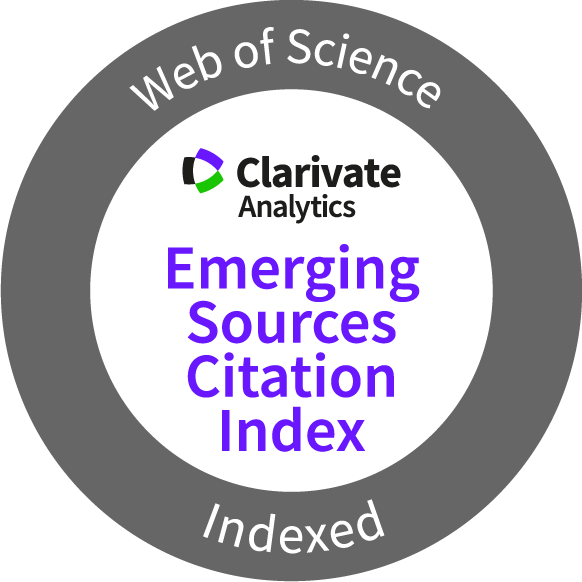Characterization of Dietary Fibers from Corn Cobs as A Potential Functional Ingredient in Muffin
Keywords:
Corn by-products, fiber extraction, functional ingredients, physicochemical analysis, textural propertiesAbstract
Dietary fiber (DF) has gained significant attention due to its potential health benefits. Corn cobs, a by-product of corn that is rich in minerals and low in protein, represent a valuable source of DF. This study investigated the fiber content of corn cobs and evaluated its potential use in bakery products to provide enhanced nutritional options. The physicochemical properties of the extracted fiber, including Fourier transform infrared spectroscopy, water-holding capacity (WHC), oil-holding capacity (OHC), swelling capacity (SC), glucose adsorption capacity (GAC), and cholesterol adsorption capacity (CAC), were assessed. Three extraction methods were employed: water, acid, and alkali. Water extraction yielded the highest total DF at 98.12% (p<0.05) and the highest insoluble DF at 69.40%, excelling in OHC, SC, and CAC. Alkali-extracted fiber demonstrated superior WHC, while acid-extracted fiber showed the highest GAC. Muffins enriched with fiber extracted using these methods were compared to the control group (without fiber), revealing no significant differences in texture, except for cohesiveness. In conclusion, water extraction is the most advantageous method, providing the highest yields, enhanced safety, and a muffin texture comparable to those made with fiber from acid and alkali extraction without compromising quality.
Downloads
Metrics
References
Agamuthu, P., Khidzir, K.M. & Hamid, F.S. 2009. Drivers of sustainable waste management in Asia. Waste Management & Research, 27(7): 625-633. DOI: https://doi.org/10.1177/0734242X09103191
Ahuja, K. & Malkani, T. 2024. Lecithin market size - by source (SOY [GMO, Non-GMO], Rapeseed/Canola, sunflower, egg yolk) and application (Food & beverages, animal feed, industrial, pharmaceutical, cosmetics) & forecast, 2024-2032 [WWW Document]. Global Market Insights Inc. URL https://www.gminsights.com/industry-analysis/lecithin-market (accessed 10.16.23).
Ajanth, P.M., Karthika, P.K.R., Jayabalan, R. & Balasubramanian, P. 2019. Dietary fiber from Indian edible seaweeds and its in-vitro prebiotic effect on the gut microbiota. Food Hydrocolloids, 96: 343–353. DOI: https://doi.org/10.1016/j.foodhyd.2019.05.031
Akinwande, B. A. & Kalu, U. G. 2020. Physicochemical properties and sensory evaluation of muffins supplemented with carrot (Daucus carota) powder. Journal of Culinary Science & Technology, 18(3): 260-272.
Aravindh, M., Sathish, S., Ranga Raj, R., Karthick, A., Mohanavel, V., Patil, P.P., Muhibbullah, M. & Osman, S.M. 2022. A review on the effect of various chemical treatments on the mechanical properties of renewable fiber-reinforced composites. Advances in Materials Science and Engineering, 2022(1): 2009691. DOI: https://doi.org/10.1155/2022/2009691
Aydoğdu, A., Şumnu, G. & Şahin, S. 2017. Effects of addition of different fibers on rheological characteristics of cake batter and quality of cakes. Journal of Food Science and Technology, 55(2): 667–677. DOI: https://doi.org/10.1007/s13197-017-2976-y
Bai, J., Luo, J. & Liu, C. 2021. Functional and physicochemical properties of dietary fiber extracted from various plant sources. Food Hydrocolloids, 119, 106899.
Baye, K., Guyot, J.P. & Mouquet-Rivier, C. 2017. The unresolved role of dietary fibers on mineral absorption. Critical Reviews in Food Science and Nutrition, 57(5): 949–957. DOI: https://doi.org/10.1080/10408398.2014.953030
Catherine, A. & Venkatachalam, S. 2020. Energy efficient process for valorization of corn cob as a source for nanocrystalline cellulose and hemicellulose production. International Journal of Biological Macromolecules, 163: 260–269. DOI: https://doi.org/10.1016/j.ijbiomac.2020.06.276
Chaplin, M.F. 2003. Fibre and water binding. In: Proceedings of the Nutrition Society, 62(1): 223–227. DOI: https://doi.org/10.1079/PNS2002203
Chen, J., Gao, D., Yang, L. & Gao, Y. 2013. Effect of microfluidization process on the functional properties of insoluble dietary fiber. Food Research International, 54(2): 1821–1827. DOI: https://doi.org/10.1016/j.foodres.2013.09.025
Cui, S. W., Roberts, K. T. & Guo, Q. 2021. Properties and functions of dietary fiber in food products: A review of recent research. Food Science and Human Wellness, 10(1), 1-10.
Dai, F., Zhuang, Q., Huang, G., Deng, H. & Zhang, X. 2023. Infrared spectrum characteristics and quantification of OH groups in coal. ACS Omega, 8(19): 17064. DOI: https://doi.org/10.1021/acsomega.3c01336
Daou, C. & Zhang, H. 2014. Functional and physiological properties of total, soluble, and insoluble dietary fibres derived from defatted rice bran. Journal of Food Science and Technology, 51(12): 3878–3885. DOI: https://doi.org/10.1007/s13197-013-0925-y
Dhingra, D., Michael, M., Rajput, H. & Patil, R.P. 2011. Dietary fibre in promoting health: A review. Journal of Food Science and Technology, 49(3): 255–266. DOI: https://doi.org/10.1007/s13197-011-0365-5
Elleuch, M., Bedigian, D., Roiseux, O., Besbes, S., Blecker, C. & Attia, H. 2011. Dietary fibre and fibre-rich by-products of food processing: Characterisation, technological functionality and commercial applications: A review. Food Chemistry, 124(2): 411-421. DOI: https://doi.org/10.1016/j.foodchem.2010.06.077
Feng, X., Ameer, K., Jiang, G. & Ramachandraiah, K. 2024. Effects of extraction methods on the structural characteristics and functional properties of dietary fiber extracted from papaya peel and seed. Frontiers in Sustainable Food Systems, 8: 1340961. DOI: https://doi.org/10.3389/fsufs.2024.1340961
Fidriyanto, R., Singh, B.P., Manju, K.M., Widyastuti, Y. & Goel, G. 2023. Multivariate analysis of structural and functional properties of fibres from apple pomace using different extraction methods. Food Production Processing and Nutrition, 5(1). DOI: https://doi.org/10.1186/s43014-022-00119-8
Harastani, R., James, L.J., Ghosh, S. & Woolley, E. 2021. Reformulation of muffins using inulin and green banana flour: Physical, sensory, nutritional shelf-life properties. Foods, 10(8): 1883. DOI: https://doi.org/10.3390/foods10081883
He, Y., Wen, L., Zhang, X., Li, T., Ren, D. & Lu, J. 2019. Physicochemical, functional, and microstructural properties of modified insoluble dietary fiber extracted from rose pomace. Journal of Food Science and Technology, 57(4): 1421–1429. DOI: https://doi.org/10.1007/s13197-019-04177-8
Heo, Y.-N., Kim, M., Lee, J. & Moon, B. 2019. Muffins enriched with dietary fiber from kimchi by-product: Baking properties, physical–chemical properties, and consumer acceptance. Food Science and Nutrition, 7(5): 1778–1785. DOI: https://doi.org/10.1002/fsn3.1020
Huang, F., Xu, Y., Liao, S., Yang, D., Hsieh, Y.L. & Wei, Q. 2013. Preparation of amidoxime polyacrylonitrile chelating nanofibers and their application for adsorption of metal ions. Materials, 6(3): 969–980. DOI: https://doi.org/10.3390/ma6030969
Jiang, C., Wang, R., Liu, X., Wang, J., Zheng, X. & Feng, Z. 2022. Effect of particle size on physicochemical properties and in vitro hypoglycemic ability of insoluble dietary fiber from corn bran. Frontiers in Nutrition, 9: 951821. DOI: https://doi.org/10.3389/fnut.2022.951821
Jiao, Y., Chen, H. D., Han, H. & Chang, Y. 2022. Development and utilization of corn processing by-products: A review. Foods, 11(22): 3709.
Jiao, Y., Chen, H.D., Han, H. & Chang, Y. 2022. Development and utilization of corn processing by-products: A review. Foods, 11(22): 3709. DOI: https://doi.org/10.3390/foods11223709
Kaur, H. & Das, M. 2019. Role of dietary fiber with high oil holding capacity in enhancing the quality of baked products. Journal of Food Science and Technology, 56(7): 3305-3312.
Leszczyński, M. & Roman, K. 2023. Hot-water extraction (HWE) method as applied to lignocellulosic materials from hemp stalk. Energies, 16(12): 4750. DOI: https://doi.org/10.3390/en16124750
Liu, C., Gong, X., Li, Y., Sun, Z., Su, L. & Zhang, X. 2023. Functional characterization of novel polysaccharide-modifying enzymes: Current perspectives and potential applications. Frontiers in Bioengineering and Biotechnology, 11: 123456.
Luqman, R.M., Mohamed Azlan, S. & Mohamad Zaki, H. 2023. Effect of alkaline treatment on the single natural fiber strength using Weibull analysis probabilistic model. Materials Today: Proceedings. DOI: https://doi.org/10.1016/j.matpr.2023.01.108
Ma, M., Mu, T., Sun, H., Zhang, M., Chen, J. & Yan, Z. 2015. Optimization of extraction efficiency by shear emulsifying assisted enzymatic hydrolysis and functional properties of dietary fiber from deoiled cumin (Cuminum cyminum L.). Food Chemistry, 179: 270–277. DOI: https://doi.org/10.1016/j.foodchem.2015.01.136
Matos, M. E., Sanz, T. & Rosell, C. M. 2014. Establishing the function of proteins on the rheological and quality properties of rice based gluten free muffins. Food Hydrocolloids, 35: 150-158. DOI: https://doi.org/10.1016/j.foodhyd.2013.05.007
Martínez-Cervera, S., de la Hera, E., Sanz, T., Gómez, M. & Salvador, A. 2013. Effect of nutriose on rheological, textural and sensorial characteristics of Spanish muffins. Food and bioprocess technology, 6: 1990-1999. DOI: https://doi.org/10.1007/s11947-012-0939-x
Njideka, B.E., Chijioke, M.B., Chioma, O.N., Nnennaya, A.N. & Iheduzaju, P. I.A. 2020. Maize cob as dietary fiber source for high-fiber biscuit. GSC Biological and Pharmaceutical Sciences, 12(1): 138-144. DOI: https://doi.org/10.30574/gscbps.2020.12.1.0203
Ntenga, R., Saidjo Saidjo, Wakata, A., Pagore Djoda, Tango, M. & Etienne Mfoumou. 2022. Extraction, applications and characterization of plant fibers. In: Natural Fiber. H.Y. Jeon (Ed.). IntechOpen, London. DOI: https://doi.org/10.5772/intechopen.103093
Poletto, M., Pistor, V. & Zattera, A. J. 2013. Structural characteristics and thermal properties of native cellulose. Cellulose, 20(2): 785-795. DOI: https://doi.org/10.5772/50452
Qasim, U., Jamil, F., Al-Muhtaseb, A. A. H., Rafiq, S., Ali, M., Khan Niazi, M. B., Nasir, M. A., Ullah, S., Mukhtar, A. & Saqib, S. 2020. Isolation of cellulose from wheat straw using alkaline hydrogen peroxide and acidified sodium chlorite treatments: Comparison of yield and properties. Advances in Polymer Technology, 2020: 9765950. DOI: https://doi.org/10.1155/2020/9765950
Qiao, H., Shao, H., Zheng, X., Liu, J., Liu, J., Huang, J., Zhang, C., Liu, Z., Wang, J. & Guan, W. 2021. Modification of sweet potato (Ipomoea batatas Lam.) residues soluble dietary fiber following twin-screw extrusion. Food Chemistry, 335: 127522. DOI: https://doi.org/10.1016/j.foodchem.2020.127522
Ramessar, K., Sabalza, M., Capell, T. & Christou, P. 2008. Maize plants: An ideal production platform for effective and safe molecular pharming. Plant Science, 174(4): 409-419. DOI: https://doi.org/10.1016/j.plantsci.2008.02.002
Rawat, N. & Indrani, D. 2014. Effect of ingredients on rheological, nutritional, and quality characteristics of fiber and protein-enriched baked energy bars. Journal of Food Science and Technology, 52(5): 3006-3013. DOI: https://doi.org/10.1007/s13197-014-1367-x
Raza, A., Khalil, A.A. & Saeed, F. 2021. Functional dietary fibers in managing glucose absorption in baked products: A review. Food Research International, 140, 109870.
Reyes, C.G. & Lagerwall, J.P.F. 2020. Disruption of electrospinning due to water condensation into the Taylor cone. ACS Applied Materials & Interfaces, 12(23): 26566-26576. DOI: https://doi.org/10.1021/acsami.0c03338
Sharma, R. & Kumar, M. 2020. Oil holding capacity of dietary fibers and their influence on baked goods: A review. Journal of Food Process Engineering, 43(6), e13372.
Silva, L.A., Bertolini, A.C. & Blanchard, C.L. 2021. Utilization of beta-glucans as fat replacers in low-fat bakery products: A comprehensive review. Food Research International, 140: 110015.
Struck, S., Gundel, L., Zahn, S. & Rohm, H. 2016. Fiber-enriched reduced-sugar muffins made from iso-viscous batters. LWT, 65: 32-38. DOI: https://doi.org/10.1016/j.lwt.2015.07.053
Taj. 2022. Global dietary fiber market is expected to reach USD 4434 Billion by 2033, growing at a CAGR of 4% [WWW Document]. EIN News; EIN Presswire. URL https://www.einnews.com/pr_news/605880542/global-dietary-fiber-market-is-expected-to-reach-usd-4434-billion-by-2033-growing-at-a-cagr-of-4 (accessed 04.24.2023).
Twarogowska, A., Van Poucke, C. & Van Droogenbroeck, B. 2020. Upcycling of Belgian endive (Cichorium intybus var. foliosum) by-products: Chemical composition and functional properties of dietary fiber root powders. Food Chemistry, 332: 127444. DOI: https://doi.org/10.1016/j.foodchem.2020.127444
US Department of Agriculture (USDA). 2021. Corn Explorer - Malaysia [WWW Document]. URL https://ipad.fas.usda.gov/cropexplorer/cropview/comm_chartview.aspx?fattributeid=1&cropid=0440000&sel_year=2021&startrow=1&ftypeid=47®ionid=seasia&cntryid=MYS&nationalGraph=False (accessed 06.16.2023).
Wang, K., Li, M., Wang, Y., Liu, Z. & Ni, Y. 2021. Effects of extraction methods on the structural characteristics and functional properties of dietary fiber extracted from kiwifruit (Actinidia deliciosa). Food Hydrocolloids, 110: 106162. DOI: https://doi.org/10.1016/j.foodhyd.2020.106162
Wang, L., Xu, H., Yuan, F., Fan, R. & Gao, Y. 2015. Preparation and physicochemical properties of soluble dietary fiber from orange peel assisted by steam explosion and dilute acid soaking. Food Chemistry, 185: 90-98. DOI: https://doi.org/10.1016/j.foodchem.2015.03.112
Wang, S., Fang, Y., Xu, Y., Zhu, B., Piao, J.-G., Zhu, L., Yao, L., Liu, K., Wang, S., Zhang, Q., Qin, L. & Wu, J. 2022. The effects of different extraction methods on physicochemical, functional, and physiological properties of soluble and insoluble dietary fiber from Rubus chingii fruits. Journal of Functional Foods, 93: 105081. DOI: https://doi.org/10.1016/j.jff.2022.105081
Xu, F., Cai, W., Yang, M. & Zhang, L. 2020. Swelling capacity and hydration properties of dietary fiber: Mechanisms and implications in food applications. Current Opinion in Food Science, 32: 91-96.
Zhang, M., Liang, Y., Pei, Y., Gao, W. & Zhang, Z. 2009. Effect of process on physicochemical properties of oat bran soluble dietary fiber. Journal of Food Science, 74(8): C628-C636. DOI: https://doi.org/10.1111/j.1750-3841.2009.01324.x
Published
How to Cite
Issue
Section
Any reproduction of figures, tables and illustrations must obtain written permission from the Chief Editor (wicki@ukm.edu.my). No part of the journal may be reproduced without the editor’s permission




















